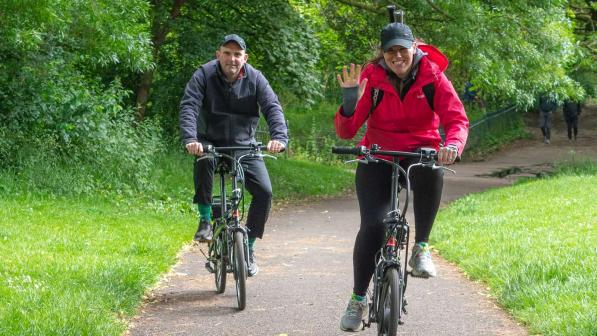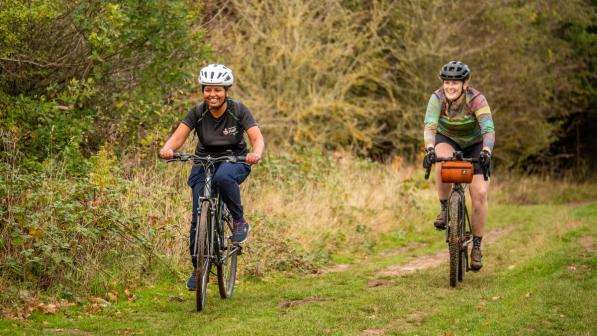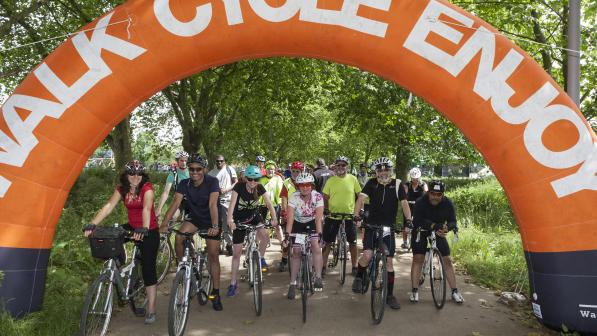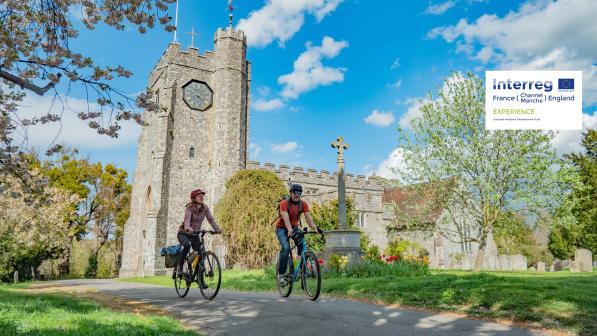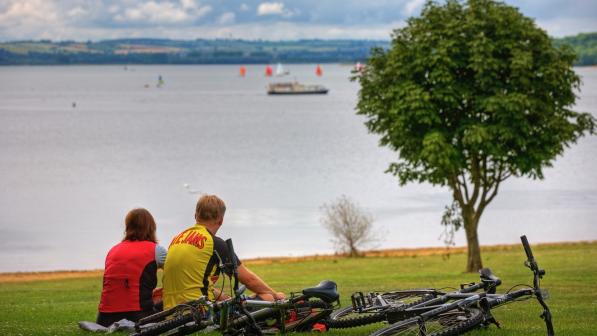10 ways to … start cycling

If one of your New Year’s resolutions is to get fitter or be more active, cycling is a great way to achieve your goals – and much better than the gym! But if it’s been a while since you last got on a bike – maybe not since childhood – then you might need some advice.
Here we share our top 10 tips to get (back) into cycling.
1 Make sure you’ve got the right bike
This may sound like the easy part, but getting the right bike for you is probably the most important thing you can do. If your bike is unpleasant to ride or doesn’t do what you need you’ll likely give up before you’ve even started.
Think about what type of cycling you want to do. Road, off road, a bit of both? Starting with a hybrid might be your best choice as they’re more versatile. There are plenty of options out there so you’re sure to find one that does what you need.
You don’t have to spend a fortune to buy a good bike; you can often pick up a good-quality secondhand one from a bike recycling centre or trusted online forums like that run by Cycling UK. We also have some handy tips in our guide to buying a secondhand bike. If you are struggling to find the right one for you, why not rent or hire a bike?
2 Wear comfortable clothing
Contrary to what you might have been told, Lycra isn’t necessary. Wear what you feel most comfortable in when cycling – but try to avoid wearing overly loose or baggy clothing which might get trapped in your chain or wheels.
There is some kit you might want to invest in, such as panniers or other bags if you’re riding to work and lights if you’ll be riding at night (it’s a legal requirement to have front and rear lights between dusk and dawn). And if you want to go full-on Lycra, that’s up to you too.
Cycling UK members get a whole range of discounts on bikes and kit, so do check out the full range of member benefits. If you’re not already a member, you can sign up here.

3 Brush up on your skills
If it’s been a while since you last rode a bike you might benefit from a refresher. Watch our how to teach an adult to ride a bike video. There are plenty of top tips from getting on and off your bike easily to demonstrating how to balance and ride unaided.
If you want to improve your skills further, look out for local cycling lessons – check your council website for free lessons. In England and Wales, training should conform to the National Standard for cycle training. Scotland has Cycling Scotland approved trainers offering adult cycle training. If free lessons aren’t available in your area, an internet search should bring up some suggestions.
4 Make sure your bike is in rideable condition
If you’ve just invested in a secondhand bike or got ‘old faithful’ out of the shed for the first time in years, it’s a good idea to take it to a local bike shop for a service. These cost around £50 but it’s a good investment to ensure your bike is safe to ride and keep you on the road for longer. Cycling UK members can get 10% off a service and repairs with Halfords.
You might be able to take advantage of a free service via Cycling UK’s Big Bike Revival or a Dr Bike session.
5 Practise in your local park or garden
Start small. Take your bike to your local park and practise getting on the saddle. Set yourself a target, whether that is to cycle a few metres or just feeling comfortable mounting and dismounting your bike, every little helps and will enable you to gain confidence.
Once you can confidently ride around a local park, you can head out on the roads and start to build up distance.
6 Learn some basic maintenance
You might not want to try this straight away, but once you’re up and running it can be handy to know how to look after your bike and check it’s in good working order before every ride – known as the M-check.
Learning how to fix a puncture and replace an old innertube are essential skills; knowing this will improve your confidence when out on your bike. Always carry a repair kit – tyre levers, new innertube, puncture repair kit and pump – when you’re out. Alternatively you could run tubeless tyres, but you’ll still need a repair kit for any holes that don’t self-seal.
If you want your bike to last we highly recommend cleaning it regularly. A splash of warm soapy water and a sponge will do the job. But if you need something a little stronger, take a look at our guide to cleaning your bike. A clean bike is much easier to do any maintenance on – you’ll see what we mean when you get a puncture!

7 Ride confidently
It is important that you feel confident when riding on roads. Good lights, hi-vis and reflective clothing may help, but it is if anything more important to consider your surroundings and road positioning. Here are a few tips on how to make yourself more able to see and be seen.
It may seem counterintuitive, but don’t hug the kerb. Riding about 1 metre out will increase your visibility and keep you away from drains and other obstacles. Don’t be afraid of ‘taking the lane’ (also known as primary position). This is where you ride in the centre of the lane to ensure you can be seen. Cycling Scotland has some great tips on taking primary position, as well as a downloadable Essential Cycling Skills Guide in several different languages.
8 Plan your route
It’s a good idea to know your route in advance, whether that’s to the local shops or a long ride in the country. Cycling UK’s Journey planner can show you the best route between two points; it also gives you the options of going off road or using the quietest possible roads.
People are often not aware of the world of alternatives to a route you would drive. A main query I get from people is about where to ride once their confidence is growing
Josh, former cycling development officer in Scotland
You can also use Google Maps or services such as Komoot or Strava to plan routes.
9 Make a cake stop
Cyclists love cake! It is, after all, essential fuel for your ride. When you head out for the first time, find your nearest coffee shop and treat yourself.
In all seriousness, though, it is important to stay fuelled while you’re on a ride to keep your energy levels up and avoid becoming overly tired.
10 Build cycling into your everyday life
One of the great things about cycling is how easy it is to make it a part of your everyday life. Look at the journeys you currently drive. Some of them will almost certainly be cycleable.
Swapping those shorter, easier journeys for the bike will help you achieve your fitness goals, upping your activity levels without you even knowing it. You’ll also save money and help the environment.
Remember to have fun out there. Everyone who cycles does so because they enjoy it and the more you do it, the better you’ll get and the more comfortable you will feel in the saddle. Even just a short ride to the shops can help.
You can find out more about how to get started cycling with our advice for beginners.
